Periodontitis, characterized by progressive loss of periodontal attachment and alveolar bone, is one of the most prevalent chronic diseases and a major cause for loss of permanent teeth in the US. Periodontitis affects ~35% of the US adults over the age of 30 years. 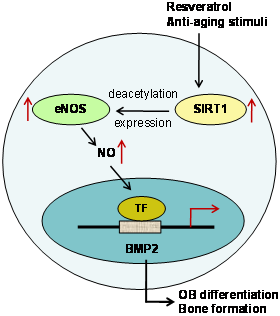
Endothelial nitric oxide synthase (eNOS) eNOS catalyzes synthesis of free radical nitric oxide (NO) in cells. Over the past a couple of decades, the effects of NO on bone metabolism have been convincingly documented. Our in vivo and in vitro and other studies have demonstrated that eNOS plays an important role in osteoblast differentiation and postnatal bone formation. This is supported by the following findings: 1) eNOS is the most widely expressed isoform of the NOS family in bone; 2) eNOS null mice develop a marked osteopenic phenotype due to impaired osteoblast function, and 3) drugs that activate eNOS activity, or mimic the eNOS product nitric oxide (NO), stimulate BMP2 expression in osteoblast cells and induce new bone formation. In addition, recently, SIRT1, a mammalian member of the Sirtuin longevity protein family which has a variety of anti-aging benefits in many species, was identified as an upstream activator of eNOS. In our preliminary studies, we found that SIRT1 which activates eNOS in osteoblasts is necessary for postnatal bone mass, as deletion of the SIRT1 gene causes significant bone loss in mice.
We also found that resveratrol, a natural anti-aging nutrient and a known powerful stimulator of SIRT1, induces SIRT1 and eNOS gene expression and enhances eNOS enzymatic activity in osteoblast cells. Therefore, we reason that the longevity factor, SIRT1, is a key upstream activator of eNOS in osteoblast cells. These findings suggest that the eNOS pathway could be a potential target for drug development that stimulate bone formation.
Using genetically deficient eNOS and SIRT1 mouse models, we are determining the precise role of this pathway in maintaining postnatal bone mass, particularly during bone aging, and the molecular mechanisms by which eNOS transactivates BMP2 gene expression in bone.
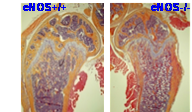 |
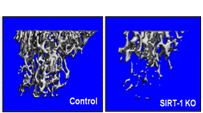 |
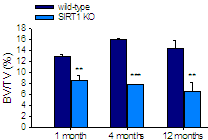 |
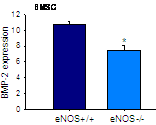 |
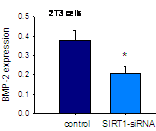 |
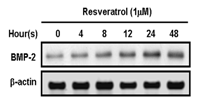 |
